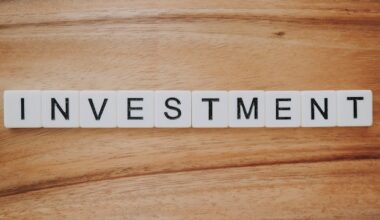You might think investment success requires hiring top fund managers, insider trading tips, or complex trading strategies. But here’s the counterintuitive truth: one of the most powerful ways to build wealth is quiet, simple—and low cost.
Yes, it’s the kind of secret that Wall Street doesn’t exactly shout from the rooftops.
Why This Investment Secret Sounds Almost Too Easy
Most people assume that experts managing your money can beat the market—and that their fees are justified. But research says otherwise:
- According to a study from Rice University’s business school, many passive index funds perform just as well as active funds—but with much lower costs. (business.rice.edu)
- Active investing often saddles you with high fees, frequent trading costs, and tax consequences. (cardiffpark.com)
- Over long horizons, lower-fee index funds tend to deliver better net returns for most investors.
In plain terms: you don’t necessarily need a superstar fund manager to win. Sometimes, all you need is a smart, patient strategy—and to keep your costs low.
What Exactly Is This “Secret”?
The secret is passive investing, specifically through low-cost index funds or ETFs (exchange-traded funds). Here’s why it’s powerful:
- Minimal Management Costs
- Index funds just replicate a market index (like the S&P 500), so they don’t pay for expensive research or trading.
- Because they trade less, they avoid higher transaction costs and taxes.
- Fee Efficiency
- Expense ratios for index funds are often a tiny fraction of those for actively managed funds. (tunedalpha.com)
- Higher fees in active funds can drag returns down even if the fund performs well before fees.
- Consistent Long-Term Performance
- Many studies show that over long periods, passive funds often outperform a large number of active funds when costs and taxes are considered.
- Some academic models argue that active managers, on average, simply can’t consistently beat market indexes once costs are factored in. (arXiv)
Why Wall Street Isn’t Always Keen to Promote This
If passive investing is such a secret weapon, why don’t more Wall Street firms brag about it? There are a few reasons:
- Revenue Model: Active fund managers earn more through higher management fees. Passive funds undercut that.
- Layered Fees: Many large investment products (funds-of-funds, advisor-wrapped accounts) include multiple layers of fees, which benefit from less-transparent cost structures. (Investopedia)
- Marketing Power: Active managers can market themselves as experts or “beat-the-market” storytellers. Passive funds don’t offer the same drama.
A Side-by-Side Comparison
Here’s a quick comparison of passive (index) investing vs. active investing, to highlight how stark the difference can be:
| Feature | Passive / Index Investing | Active Investing |
|---|---|---|
| Cost / Fees | Very low expense ratios (e.g., 0.03%–0.20%) | Higher fees (often 0.5%–2%+) (BFI Insights) |
| Trading Frequency | Low – less turnover (ICICI Direct) | High – more frequent trades |
| Tax Efficiency | Better: fewer distributions, lower taxable events (Wharton Executive Education) | Worse: higher turnover = more capital gains tax (cardiffpark.com) |
| Performance Risk | Tracks the broad market; very disciplined | Depends on manager skill; often fails to beat the market after fees (business.rice.edu) |
| Transparency | High — you can see the whole underlying index | Less transparent; holdings may change often |
Real-World Impact: How Much Could This Secret Actually Save You?
Let’s say you invest $100,000 for 30 years. Here’s a simplified scenario:
- Using a low-cost index fund with a 0.05% fee → you keep more of your returns.
- Using an active fund with 1.5% annual fee → that fee alone could cost you tens of thousands over decades.
And that’s before factoring in:
- Extra costs from taxes (due to higher turnover)
- Hidden or layered fees that some funds nest in complicated structures (Investopedia)
Why This Strategy Isn’t Just for Passive Investors — It’s for Smart Investors
This “secret” isn’t about being lazy. It’s about leveraging efficiency. Here’s how smart investors (even sophisticated ones) use it:
- Core Portfolio Building: Use index funds for broad market exposure.
- Tactical Tilts: Use active strategies for small portions if you believe in certain market segments or themes.
- Long-Term Wealth: Let the power of compounding work for you—without paying a huge cut to “experts.”
Risks to Be Aware Of
No strategy is without risk. Here’s what to watch out for when relying heavily on passive investing:
- Market Risk: Index funds go up and down with the market. You’re not avoiding risk — just not paying to try to beat it.
- Tracking Error: Lesser-known index funds may not perfectly track their benchmarks.
- Too Much Simplicity: Some investors may feel passive investing is too “boring” or uninvolved.
- Overconfidence in Low Fees: Low fees help, but they don’t guarantee big returns — market direction matters.
Why This Secret Is Finally Becoming Hard to Keep
The good news? More people are catching on, which is forcing Wall Street to adapt:
- According to recent reports, fund fee wars are cooling — but passive fund costs are already near rock bottom, sparking concern among big firms. (Barron’s)
- The ETF revolution is booming: U.S. investors have saved $250 billion thanks to ETFs’ low fees and tax efficiency. (Financial Times)
- Regulators and advisors are increasingly promoting low-cost index strategies to average investors.
What You Can Do to Use This Secret Wisely
- Start with Index Funds: Investigate broad-based index funds (S&P 500, Total Stock Market, etc.).
- Avoid High-Fee Products: Read fund prospectuses carefully to understand expense ratios.
- Diversify Smartly: Use passive funds for the core and active ones for specialized bets if warranted.
- Stay Long-Term Focused: Avoid panicking during market drops — compounding works best over decades.
- Minimize Tax Drag: Use tax-efficient accounts (IRAs, 401ks) and choose low turnover funds.
- Stay Informed: Watch cost trends and regulatory shifts — the secret’s out, but financial firms still pivot.
Final Thoughts
Here’s the bottom line: the most powerful investment secret Wall Street doesn’t want you to know isn’t about insider access or market timing. It’s about discipline, transparency, and cost-efficiency.
By embracing passive, low-cost index investing, ordinary investors can unlock extraordinary long-term growth. It’s quiet. It’s simple. And it works.
If you liked this deep dive, feel free to share this post, read more about smart investing strategies — your future self will thank you.
Discover the Secret Mortgage Refinance Loophole Big Banks Don’t Advertise
Unlock Massive Side Hustle: The Side Hustle Paying Americans $5,000/Month With Just AI Tools






